Irish Good Luck Charms and Their Origins: Unveiling Historical Symbolism
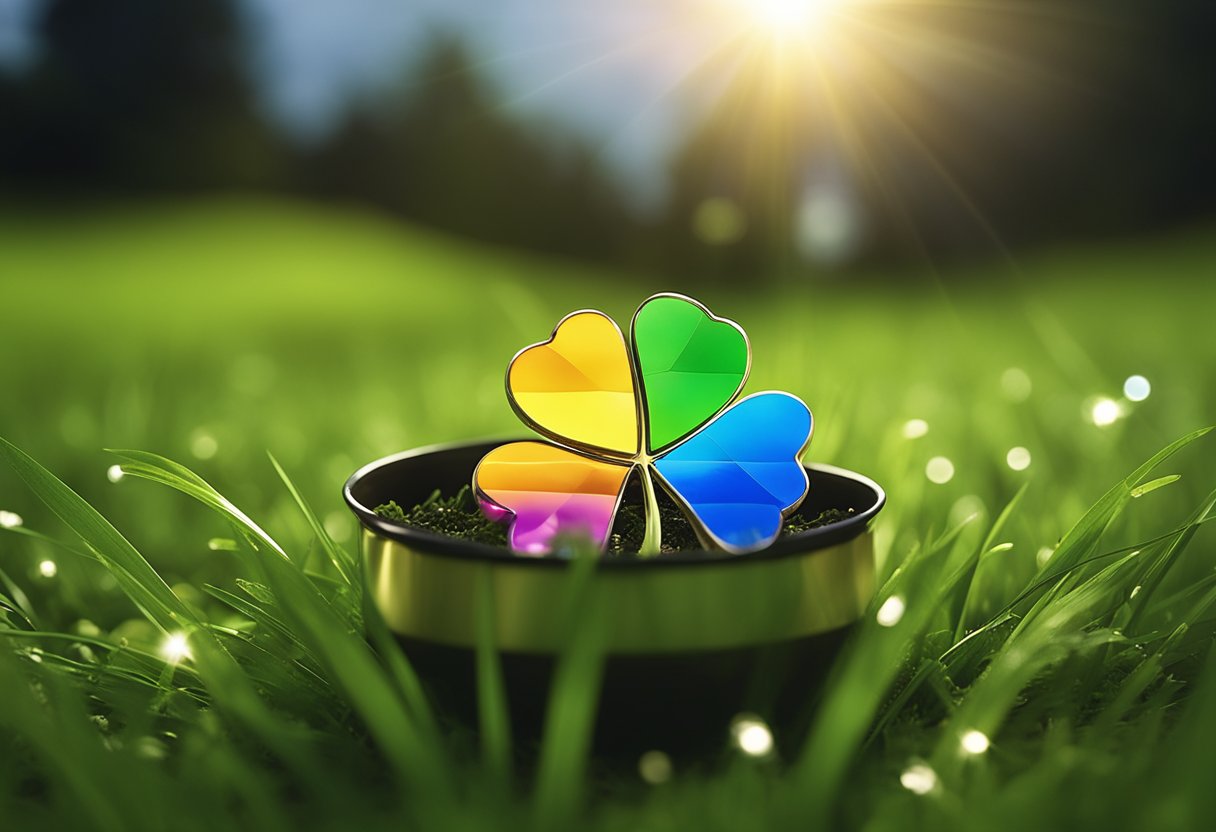
Updated On: April 28, 2024 by Eman Sameh
Irish good luck charms are a fascinating aspect of Ireland’s rich cultural tapestry. These symbols of luck and protection have been woven into the fabric of Irish tradition for generations, finding their roots in ancient folklore, religious beliefs, and everyday life. From the globally recognised shamrock to the intricate designs of the Celtic cross, each charm bears its own history and significance, underlining the deep connection between Irish identity and the mystical. Beyond mere superstition, these charms reveal the Irish people’s love for storytelling and their respect for the power of symbols.
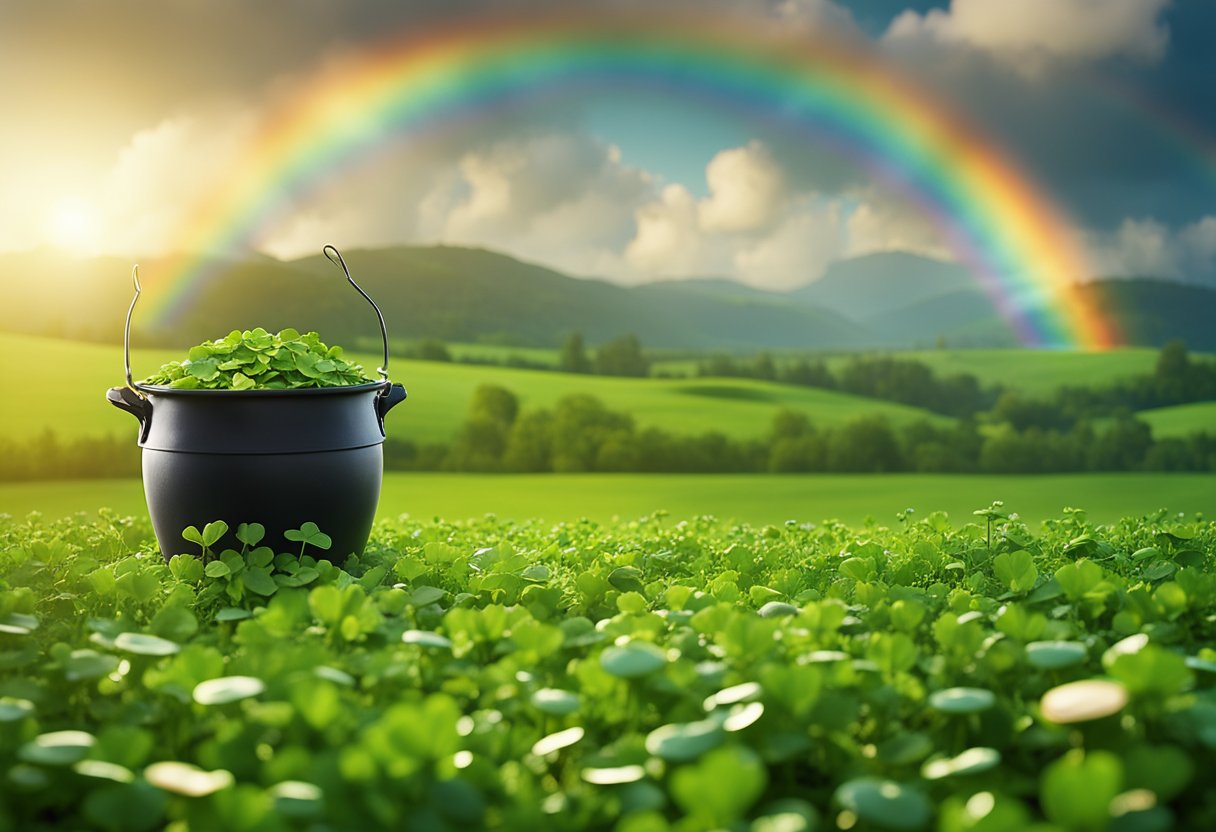
Among the most cherished of these charms is the shamrock, deeply tied to the legend of Saint Patrick and the Holy Trinity and often considered the quintessential symbol of Ireland. The Trinity Knot and the Claddagh Ring also carry with them tales of love, loyalty, and spirituality, resonating with universal human experiences. While many such charms are renowned worldwide, the lesser-known symbols also play a vital role in the day-to-day superstitions and rituals that colour Irish life. The endurance and evolution of these charms highlight their ability not only to serve as a means of safeguarding against misfortune but also as a testament to Ireland’s enduring influence far beyond its shores.
The History and Evolution of Irish Good Luck Charms
In examining Irish good luck charms, one must consider their ancient Celtic roots and the enduring appeal these symbols hold in modern times.
Ancient Celtic Symbols and Their Meanings
Ireland‘s heritage is rich with ancient Celtic symbols, each bearing its own unique meaning. The Celtic Knot, intricate and endless, represents the timeless nature of the spirit and life’s continuous journey. The Trinity Knot, also known as the Triquetra, has evolved from its Pagan origins to become symbolic of the Holy Trinity in Christian Ireland. Deeply ingrained in Irish history and Celtic mythology, these symbols have been passed down through the ages as protective emblems and tokens of good fortune.
Irish Charms from Myth to Modernity
Transitioning from ancient Celtic symbols to contemporary tokens, the Shamrock emerges as a universally recognised symbol of Ireland. This humble three-leafed plant gained its status partly due to St. Patrick, who, as legend has it, used it to explain the concept of the Trinity. While the rare four-leaf clover is celebrated for bringing forth even greater luck. Evolving through Irish history, these charms have retained their appeal, bringing a sense of heritage and luck to those who keep them close.
Significance of the Shamrock in Irish Lore
The shamrock, a symbol intertwined with Irish identity and the concept of luck, holds a deep significance rooted in the country’s history and legend. Its ties to St. Patrick and the Holy Trinity have become a cornerstone of Irish heritage and tradition.
The Shamrock and the Holy Trinity
The shamrock, a three-leaved plant commonly associated with Ireland, carries a spiritual significance that dates back to the time of St. Patrick. It is said that St. Patrick used the shamrock’s three leaves to illustrate the concept of the Holy Trinity—the Father, Son, and Holy Spirit—as separate elements of one entity to aid in converting the Irish people to Christianity. This example helped make the shamrock an enduring symbol of Ireland’s faith and religious heritage.
Shamrocks and Irish National Identity
Beyond its religious connotations, the shamrock has become a national emblem, contributing to the Irish identity and the phrase “the luck of the Irish.” The association of the shamrock with good fortune is likely linked to its rarity in finding the four-leaved variant, regarded as a lucky omen. Over time, this belief merged with the shamrock’s religious symbolism to establish it within the fabric of Irish culture and lore.
Our content explores the stories and traditions that make the shamrock a beloved and recognised emblem of Ireland’s history and identity. To delve deeper into the history and symbolism of the shamrock, visit Connolly Cove.
The Power of Symbols: From the Trinity Knot to the Celtic Cross
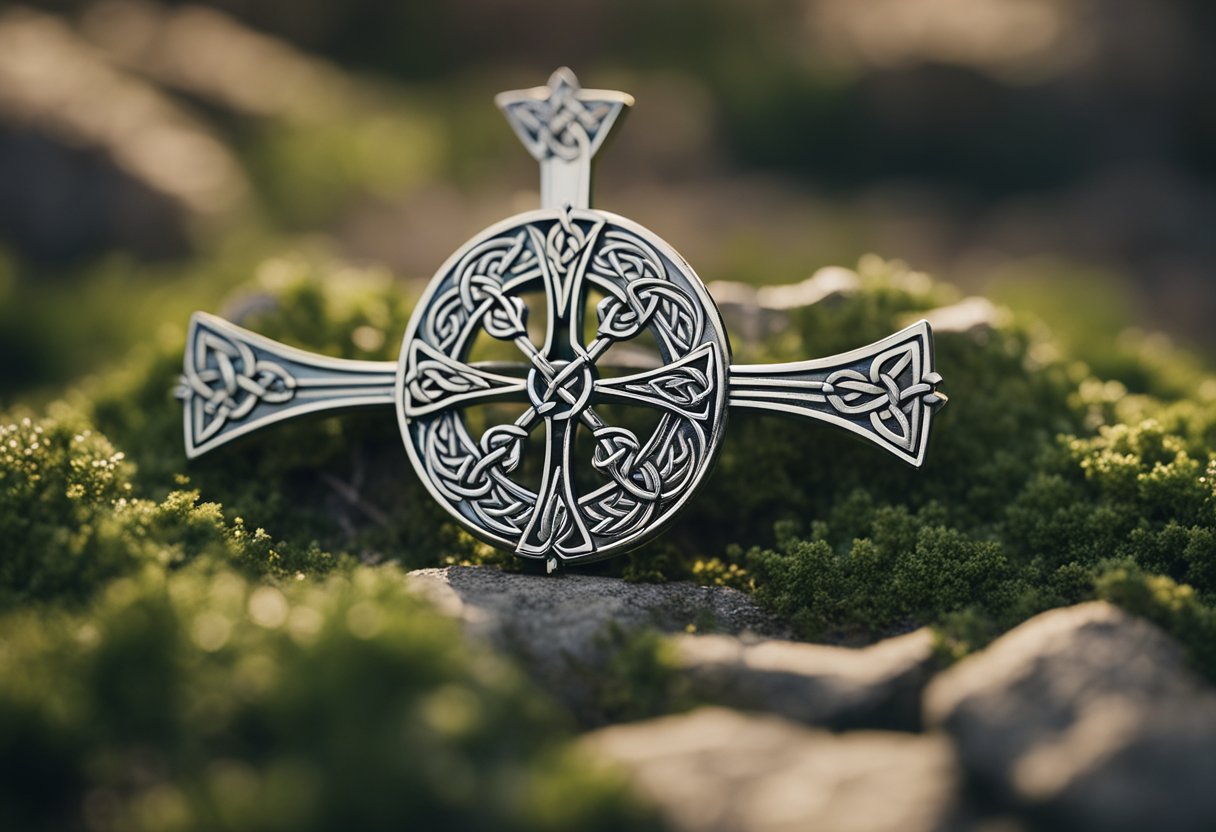
Symbols like the Trinity Knot and the Celtic Cross are integral parts of Irish heritage, embodying concepts of unity, eternity, and faith. These icons have stood the test of time, not only as decorative elements but also as emblems of cultural identity.
The Trinity Knot’s Connection to Eternity
The Trinity Knot, or the Triquetra, represents an unbroken line weaving into itself, symbolising no beginning or end. It encapsulates the idea of eternal life and has evolved to embody various meanings across different cultures, including unity and an indivisible bond. Some interpret the Triquetra as a symbol of love and commitment, often incorporated in jewellery and decorative items. Significantly, the Trinity Knot is also related to the Celtic belief in the importance of the Earth, Sea, and Sky.
The Enduring Legacy of the Celtic Cross
The Celtic Cross, with its unique design combining a traditional cross with a circular ring, represents the synthesis of celestial and earthly energies. It potent symbolises faith and unity, connecting the divine ‘circle of life’ with the linear, earthly plane. This cross often features intricate knotwork, believed to ward off evil spirits and provide protection. The iconic design of the Celtic Cross has ensured its continued prominence in headstones, monuments, and artworks, making it a timeless emblem of Irish heritage.
The Claddagh Ring: Love, Loyalty, and Friendship
The Claddagh ring is a cherished symbol of love, friendship, and loyalty. This Irish trinket, originating from Galway, intertwines romance with tradition, and today, it continues to signify relationship statuses when used in modern marriages.
The Romantic Tale of Richard Joyce
Richard Joyce, a silversmith from Galway, is often credited with creating the Claddagh ring in the 17th century. The legend tells of Joyce being captured and enslaved by Algerian Corsairs, where he learned the craft of metalwork. Upon his release, Joyce returned to Galway and created the Claddagh design. It’s believed that the ring was his tribute to the love he had for a sweetheart he left behind, and this romantic origin fuels the charm of the Claddagh ring. Joyce’s life and the ring’s narrative are deeply rooted in love and loyalty.
Symbols and Usage in Modern Marriages
The design of the Claddagh ring is rich in symbolism—two hands cradle a heart, topped with a crown, representing friendship (hands), love (heart), and loyalty (crown). In modern martial traditions, how the ring is worn serves as a non-verbal declaration of one’s romantic status:
- Worn on the right hand, with the heart facing outwards: Single and open to love.
- Worn on the right hand, with the heart turned inwards: In a relationship.
- Worn on the left hand, with the heart turned inwards: Engaged or married.
These customs have turned the Claddagh ring into a distinctive and precious piece used to convey messages of love and commitment in marriage, a testament to the enduring legacy of Richard Joyce and the city of Galway.
Cultural Tidbits: Exploring Lesser-Known Charms and Symbols
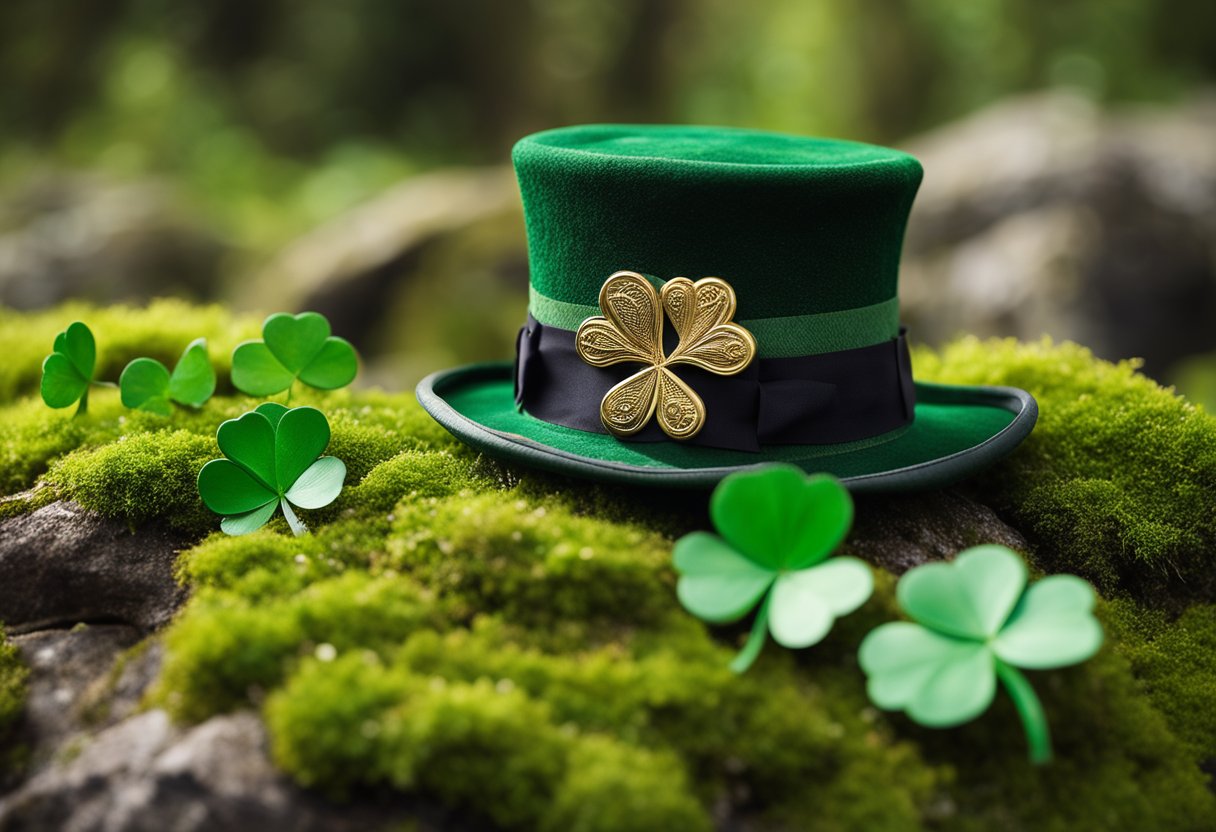
In Irish folklore, numerous charms and symbols promise to bestow luck and protection upon those who honour their significance. Let’s delve into some of these fascinating emblems.
The Dara Knot and the Ailm’s Protective Qualities
The Dara Knot is often considered a symbol of strength. Its name comes from the Irish word ‘doire,’ which means ‘oak tree.’ Representing the intricate root system of the oak, this emblem reminds us of the wisdom inherent in nature. It’s thought to bring inner strength to those facing challenging times.
Similarly, the Ailm, typically represented by a simple cross within a circle, is considered a source of protection. It’s closely linked with the ancient Irish alphabet, Ogham—where each letter signified a different tree—and the Ailm symbolized the resilience and healing powers of the evergreen.
Pot of Gold: Wealth and the Leprechaun Legend
At the end of the rainbow, the Pot of Gold is a legendary emblem interconnected with the wily Leprechaun. Central to Irish mythology, the Leprechaun is often portrayed as a solitary creature who mends shoes and hoards his treasures. Discovering a Leprechaun’s pot of gold could be seen as a ticket to immense wealth, albeit a near-impossible challenge considering these fairies’ clever and elusive nature.
The Triquetra’s Symbolism Beyond the Celtic Trinity
Lastly, the Triquetra, or Trinity Knot, is an iconic symbol in Celtic tradition. It is commonly understood to represent interconnected concepts such as ‘mind, body, spirit,’ or the ‘earth, sea, and sky.’ Beyond its associations with the Celtic Trinity, the Triquetra also symbolises eternal life and the spirit’s timeless nature with its unbroken, continuous lines.
These symbols—some lesser known than others—offer a fascinating glimpse into Irish cultural traditions and the enduring beliefs in luck, protection, and the interconnectedness of life.
Superstition in Daily Life: The Role of Charms and Rituals
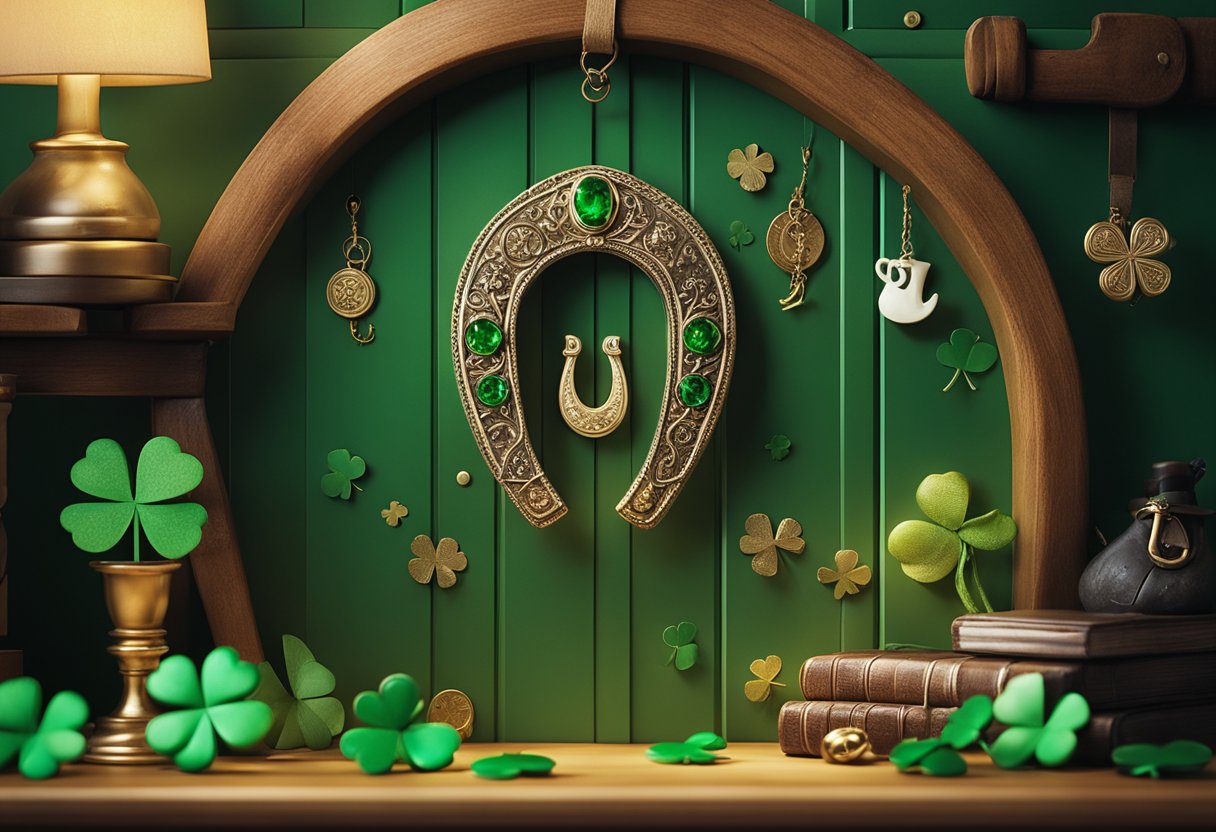
In our daily lives, superstitions entwine with our routines, often through charms and rituals that bring good fortune or ward off bad luck.
The Influence of Superstitions on Everyday Practices
Superstitions permeate our everyday lives, subtly influencing decisions and actions. A common practice is avoiding walking under ladders, stemming from the belief that it invites bad luck, possibly due to its association with the shape of a gallows. Similarly, many of us throw salt over our left shoulder to ward off evil, as salt was historically valuable and thought to have purifying properties.
Candles, Mirrors, and Other Household Charms
Within the household, objects such as candles and mirrors hold superstitious significance. It is often considered unlucky to blow out a candle and relight it, as this is thought to disrupt good luck. Mirrors hold a special place in superstitions, where breaking one is believed to lead to seven years of misfortune. This belief possibly originates from the idea that mirrors hold pieces of one’s soul. The horseshoe is another item historically hung in homes to attract good luck and keep away evil spirits, ideally with the open end facing upwards to keep the luck from spilling out.
The Intersection of Luck and the Arts in Irish Culture
Irish culture is woven with strands of luck that permeate its arts, from traditional music to celebrated literature. Here, we examine how luck influences the arts, enhancing the cultural fabric of Ireland.
Luck in Music and Literature
The concept of luck resonates strongly within Irish music and literature, often shaping narratives and melodies. Song lyrics frequently touch on themes of fortune and destiny, while Irish folk music, known for its lively jigs and reels, sometimes carries undertones of providential fortune entwined with the notes. In literature, esteemed writers like Samuel Beckett have explored the intersection of happenstance and human experience, their work reflecting the complex relationship between luck and life’s outcome.
Symbols and Motifs in Irish Performing Arts
In the performing arts, luck symbols are embedded in the essence of storytelling and theatre. Protective charms like the four-leaved shamrock are emblematic, while mythical creatures from folklore add a layer of mystical strength to performances. Onstage, these motifs convey a deeper connection to Irish heritage, embedding a sense of continuity and enchantment that speaks to the enduring belief in the power of luck amidst the tapestry of Irish cultural expression.
The Concept of Luck in Irish Folklore and Reality

In exploring the theme of luck in Irish folklore, we unearth a tapestry woven with beliefs in magical beings and notions of good and misfortune. These traditions and stories have deep roots and are a testament to the culture’s complexity and depth.
Fairies and Leprechauns: The Aos Sí and Luck
The Aos Sí, also known as the ‘good people’ or ‘fairies’, are central to the whimsical side of Irish folklore. The leprechaun, a fairy type, is particularly synonymous with luck in Ireland. Often depicted as mischievous cobbler-little men with a hidden pot of gold, pursuing these beings in the hope of fortune is a common motif. Ensuring good fortune often meant appeasing these fairies, whose displeasure could lead to misfortune. Irish tales have rules and rituals to ensure fairies remain benevolent, such as leaving offerings or observing certain superstitions to avoid upsetting them.
The Dichotomy of Good Fortune and Misfortune
The line between good fortune and misfortune is finely drawn in Irish folklore. While finding a four-leaf clover is universally considered a token of good luck, other elements, such as fairy forts or certain trees, are treated respectfully for fear of attracting bad luck. This balance of fortune is critical — respecting the old ways and the ‘good people’ garners favour, while negligence could result in misfortune or even retribution. This aspect of Irish culture is a fascinating look at how the promise of luck and the threat of misfortune can influence actions and attitudes.
Protection and Prosperity: How Charms Shield Against Bad Luck
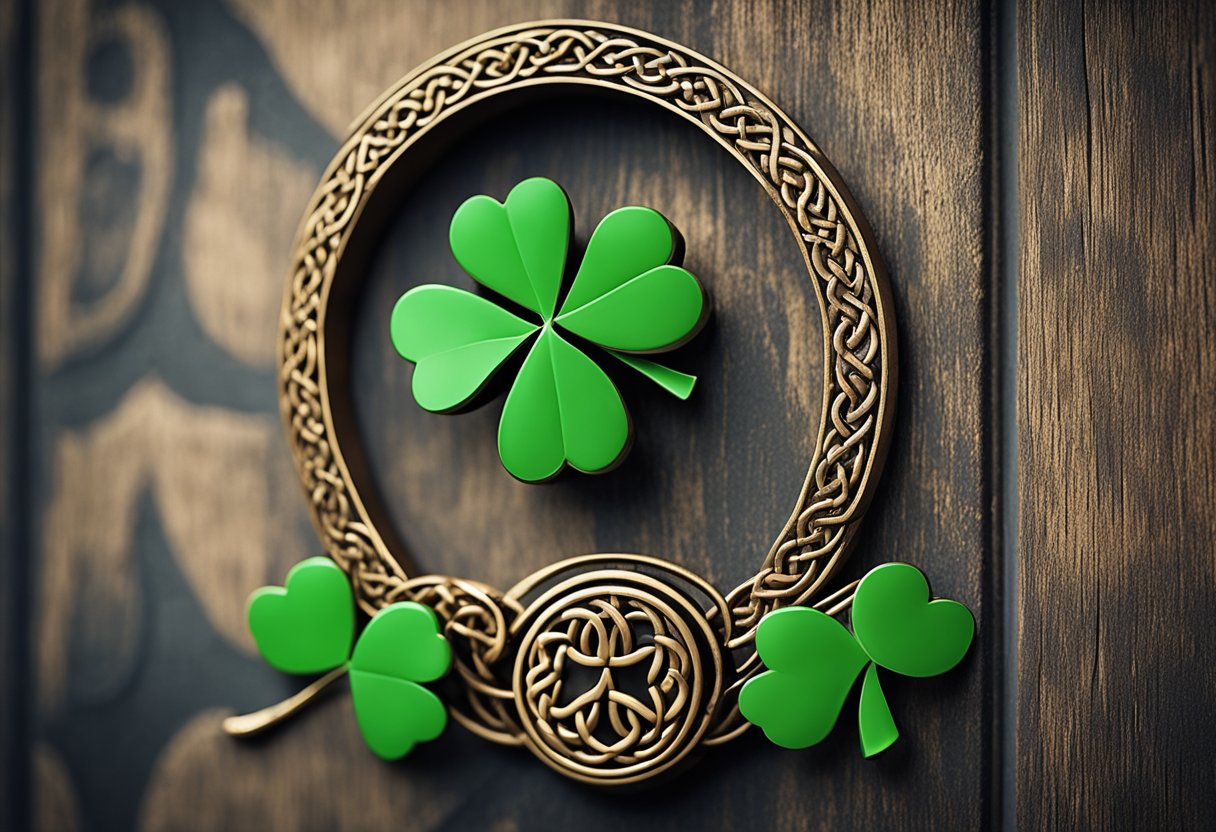
We often employ various charms to shield ourselves from misfortune and to attract wealth into our lives. These talismans are steeped in tradition and are believed to fend off negative energies such as envy and jealousy.
The Role of Charms in Warding Off Envy and Jealousy
Charms have long been associated with the ability to offer protection against the evil eye—a malevolent glare believed to harm unsuspecting individuals. In Irish culture, one might use specific objects or symbols to deflect such envious looks. The evil eye is a pervasive superstition, and charms like the eye itself or certain amulets are favoured to ward off its effects.
For instance, wearing or carrying an item adorned with an eye design is thought to reflect ill will back to the sender. Irish fishermen, in particular, might paint an eye on their boats to ensure a safe and bountiful expedition, mindful of the ocean’s unpredictable nature and the jealousy of less fortunate seafarers.
Using Charms for Personal and Economic Wealth
Charms are also used to attract wealth and prosperity. This practice involves symbols and activities believed to bring about economic fortune. A common charm is the shamrock, associated with St. Patrick and used to symbolise luck in Irish folklore. In addition to their protective properties, charms like four-leaf clovers and horseshoes are carried by individuals looking to improve their personal finances or business success.
Handed down through generations, lucky charms are intertwined with Irish history and a nod to the nation’s cultural heritage. They are embraced not just in Ireland but by people worldwide who seek to secure their own slice of good fortune.
The Influence of Irish Good Luck Charms Beyond Borders
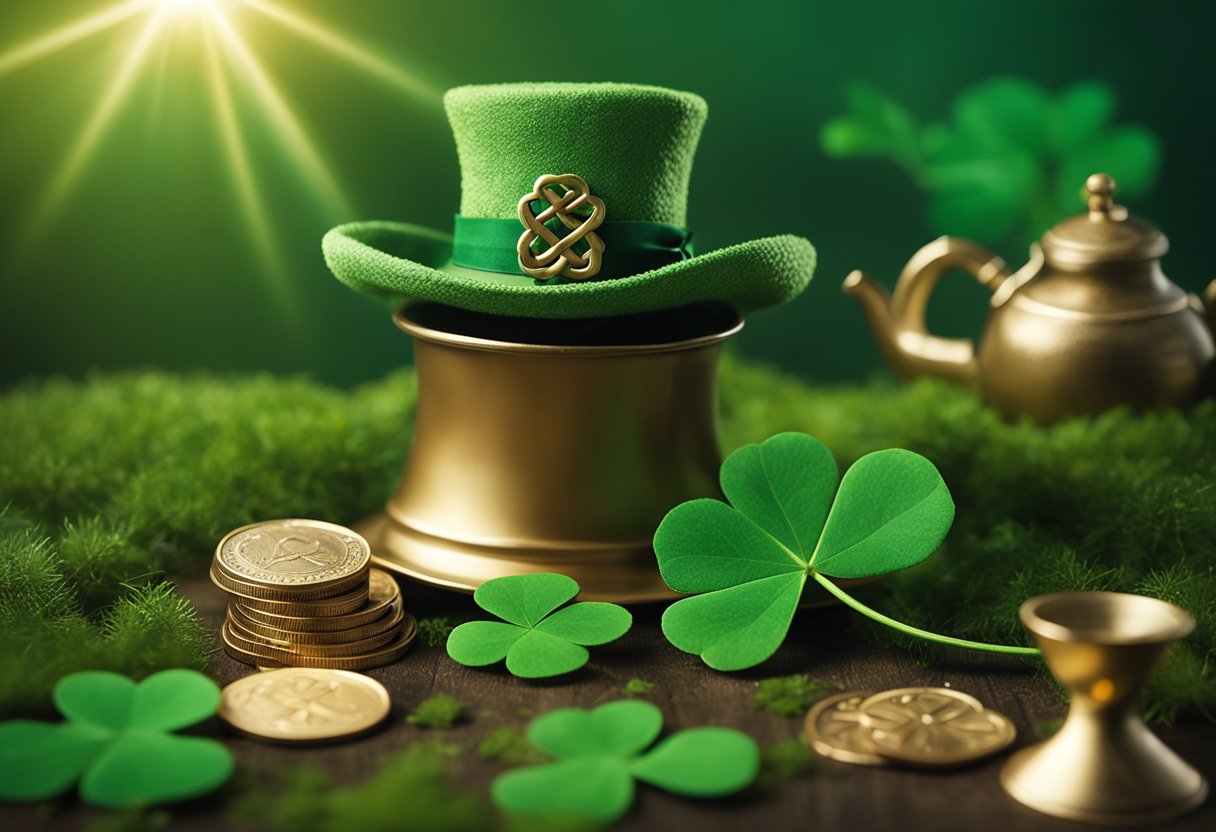
Irish good luck charms have become symbols recognised around the world, transcending their origins and becoming embedded in various cultures. They carry with them Ireland’s rich legacy and have melded into the global tapestry of cultural heritage.
Irish Charms in the Global Context
Irish traditions have always resonated deeply due to their enigmatic origins and profound meanings. Across the globe, symbols such as the Claddagh ring, which signifies love, loyalty, and friendship, have found their way into the international narrative of Irish symbols, both as jewellery and a symbol of cultural heritage. This significance is not confined to Ireland; it has permeated international borders, becoming an emblem of Irish identity and cultural influence.
From the heart of Galway, the design of the Claddagh ring itself travels across seas, finding new homes and interpretations abroad. The Celtic symbols, woven into the fine metalwork of Irish jewellery, have become a global expression of good fortune and a shared cultural influence. They become part of the story of those far from Ireland’s shores, and in doing so, they bridge gaps between nations and peoples.
Adaptation and Interpretation Across Cultures
The intersection of Irish charms with different cultures leads to unique adaptations and interpretations. For example, when incorporated into wedding ceremonies worldwide, the Claddagh ring fuses Irish cultural heritage with local customs, creating a poignant blend of cultural significance. Similarly, Celtic symbols such as the Triquetra or the Celtic Knot have become influential motifs in artistic communities beyond Ireland, evolving into designs that carry a mix of cultural narratives.
These charms have become versatile fixtures in the global community, symbolising a connection that transcends their Irish roots. They often serve as ambassadors of Irish culture, inviting people to explore the rich tapestry behind these tokens of luck and the narratives they carry. As they adapt, their core values—unity, strength, and continuity—are embraced within the spectrum of worldwide customs and traditions.
Frequently Asked Questions
In this section, we address some common queries about Irish symbols of good luck, their origins, and how they’re celebrated within the rich tapestry of Irish culture.
What are the most recognised Irish symbols associated with good fortune?
Some of the most recognised symbols include the shamrock, known for its connection to St. Patrick and the Holy Trinity, and the four-leaf clover, a rare variation of the shamrock that’s considered particularly lucky.
Could you explain the origins and meanings behind traditional Irish lucky charms?
Traditional charms, such as the Claddagh ring, symbolise love, loyalty, and friendship. Their design and manner of wearing convey a wearer’s relationship status. The history, folklore, and mythology of Irish luck delves into more such symbols rooted in ancient Celtic traditions and Irish folklore.
In Irish culture, which symbols are traditionally considered to bring luck?
In Irish tradition, besides the shamrock and four-leaf clover, other symbols, such as the horseshoe, when hung upright, and the harp, which represents the bridge of love connecting heaven and earth, are considered fortunate.
How does the concept of luck manifest in Irish folklore and customs?
Luck in Irish folklore is often tied to respecting the natural and mystical worlds. For instance, upsetting the Aes Sídhe, fairy folk, is thought to bring bad luck, while honouring them, possibly with a fairy garden, could bring good fortune.
Which charms are uniquely Irish and are believed to offer protection and prosperity?
Specifically, Irish charms include the St. Brigid’s Cross, often weaved from reeds and hung in homes to ward off evil, and the Aes Sídhe and Celtic knots, which signify the eternal cycle of life and are thought to protect against ill will.
Are there any specific phrases or sayings in Ireland known to express wishes of good luck?
Yes, phrases such as “May the road rise up to meet you” convey blessings and good fortune in Irish culture. Other well-wishings include “Sláinte”, commonly used as a drinking toast, meaning health, which implies good luck overall.






